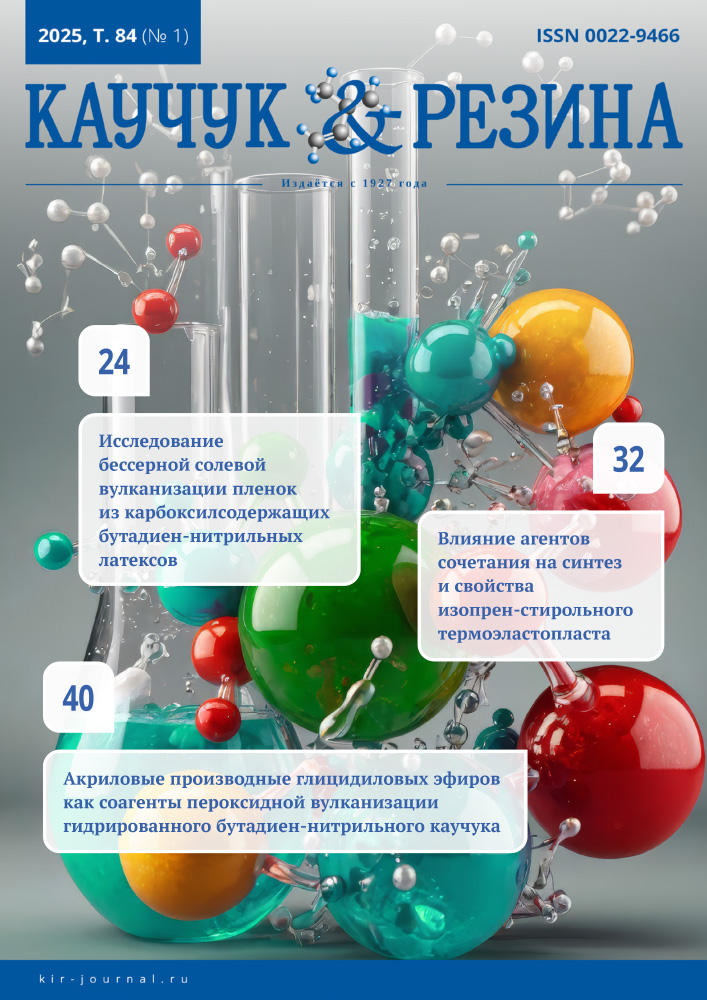Changing the Properties of Radiosonde Latex Shells during Aging and Forecasting their Shelf Life
Published 2025-02-25
How to Cite
Abstract
The results of accelerated and full-scale tests of the material of radiosonde shells (NR grade RSS) for aging resistance during storage are presented. The shells are made of compositions based on natural latex. Antioxidants such as agidol-2, IPPD, phenyl-β-naphtyl-amine and 6PPD were used to increase aging resistance. It has been shown that agidol-2 and 6PPD are the most effective, but their administration is justified only with long shelf life. IPPD and phenyl-β-naphtyl-amine negatively affect aging resistance. As natural latex films age, their tensile strength decreases, and the elongation remains virtually unchanged. The negative effect of antioxidants on the life of the latex mixture has been revealed. It has been shown that at the first stage of production, antioxidants denature the protein shell of latex globules and shorten the shelf life of the latex mixture to 5–7 days. Natural latex contains natural antioxidants, so additional stabilization of films based on it is advisable only for long shelf lives exceeding 5 years. An express method for assessing changes in the properties of RSS during storage for three days at 100 °C is proposed. The guaranteed shelf life of the tested shells is 5 years.

